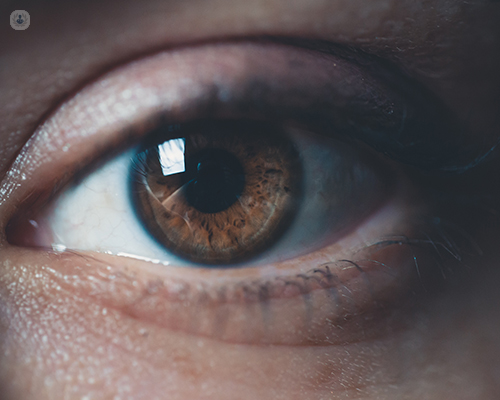Blepharoplasty: What you need to know
Written in association with:Blepharoplasty, also known as eyelid surgery, is a surgical procedure that aims to improve the appearance of the eyelids. It involves the removal of excess skin, muscle, and sometimes fat from the upper and lower eyelids. This procedure can address droopy eyelids, under-eye bags, and excess skin, providing a rejuvenated and more youthful appearance. In his latest article, leading consultant ophthalmologist Mr Thomas Kersey answers his patients’ most frequently asked questions regarding this procedure, including the how long the results last and whether there are any possible risks or complications.

How long does blepharoplasty last?
The results of blepharoplasty can be long-lasting. Generally, patients can expect the improvements to last between 5 to 10 years. However, this can vary based on individual factors such as skin type, age, lifestyle, and the natural aging process. While the surgery can make a significant difference, it does not halt aging, so some patients may opt for a touch-up procedure down the line.
Is blepharoplasty a painful procedure?
Blepharoplasty is typically performed under local anaesthesia with sedation or general anaesthesia, ensuring that the patient does not experience pain during the surgery.
Post-surgery, patients may experience mild discomfort, swelling, and bruising, which can be managed with prescribed pain medications and cold compresses. Most patients find that any discomfort subsides within a week or two.
Risks or complications of blepharoplasty
As with any surgical procedure, blepharoplasty comes with potential risks and complications, although they are relatively rare. These may include:
- Infection: As with any surgery, there is a risk of infection at the incision sites.
- Bleeding: Some patients may experience excessive bleeding during or after the procedure.
- Dry eyes: Temporary dryness or irritation can occur post-surgery.
- Scarring: Scars are usually minimal and well-concealed within the natural creases of the eyelids, but there is a possibility of noticeable scarring.
- Vision issues: Temporary blurred vision or double vision can occur but typically resolves within a few days.
- Asymmetry: Slight differences in healing or surgical results between the two eyes may occur.
It is essential to choose a qualified and experienced surgeon to minimise these risks.
Best age to get a blepharoplasty
There is no specific "best age" for blepharoplasty as it depends on individual needs and concerns. Most patients seeking this surgery are in their 40s to 60s when signs of aging around the eyes become more pronounced. However, younger individuals in their 30s may also opt for the procedure if they experience hereditary conditions such as under-eye bags or droopy eyelids.
Recovery process and aftercare
The recovery period for blepharoplasty is relatively short compared to other surgical procedures. Most patients can return to their normal activities within 7 to 10 days. During the recovery phase, it is crucial to follow post-operative care instructions provided by your surgeon:
- Keep the head elevated: This helps reduce swelling.
- Use prescribed medications: Follow your doctor's advice on pain management and antibiotic use to prevent infection.
- Avoid strenuous activities: Refrain from heavy lifting and intense physical activities for at least a couple of weeks.
- Protect your eyes: Wear sunglasses to shield your eyes from sun and wind.
Mr Thomas Kersey is an esteemed consultant ophthalmologist based in Farnborough, Surrey & Esher. If you would like to book a consultation with Mr Kersey, you can do so today via his Top Doctors profile.


